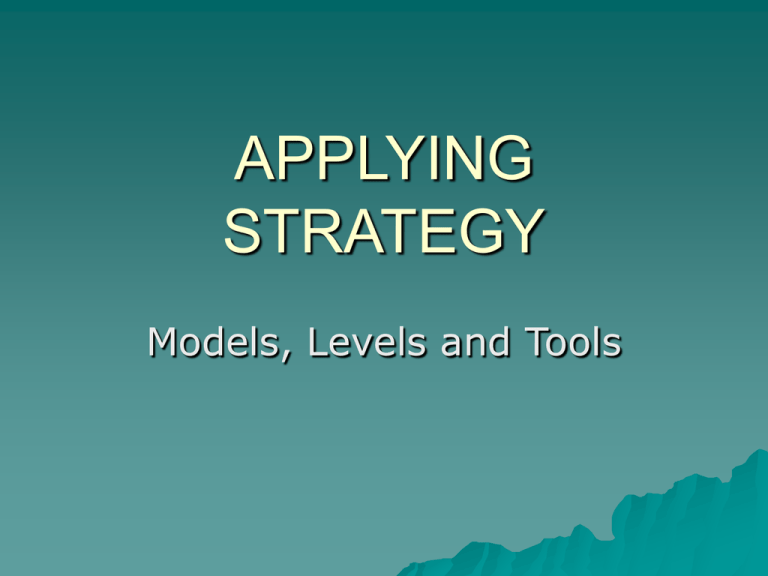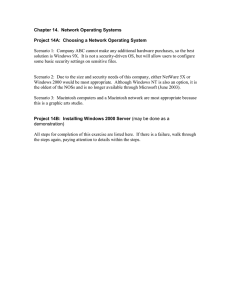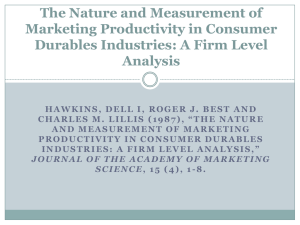APPLYING STRATEGY Models, Levels and Tools
advertisement

APPLYING STRATEGY Models, Levels and Tools Learning Objectives 1. 2. 3. 4. 5. Describe the 3 basic approaches to strategy that organizations can adopt Discuss 3 levels of strategic decision making in organizations List the main strategic planning tools Understand why quantitative tools have tended to be preferred to qualitative ones Appreciate the growing interest in vision building techniques Types of Strategies Teece (1997), there are 3 basic type that organizations do adopt in practice : 1. The competitive forces model 2. The strategic conflict model 3. The resource based model Level of Strategy The 3 levels of strategic decision making in organization : 1. The corporate level 2. The business level 3. The functional level Corporate level strategy There are 6 basic forms of strategy : 1. Stability strategy 2. Growth strategy 3. Portfolio extension 4. Retrenchment strategy 5. Harvesting strategy 6. Combination strategy Business level strategy Porter (1985) create 3 generic strategies for achieving competitive advantage : 1. Cost leadership 2. Product differentiation 3. Specialization by focus Functional level strategy The main function concern marketing, finance, R&D, human resource, manufacturing and purchasing This level is the most neglected by western manager cause : 1. The concentration of corporate and business led to a lack of internal operations 2. Key element of function level were in effect determined and constrained by corporate 3. Eventhough 1980s tends saw interest in function level, this tended be one sides, tending to stress soft, personal type issues Types of Organization Miles and Snow (1978) classify the strategic organization base on the rate organization changes its products or market : 1. Defenders 2. Prospectors 3. Analyzers 4. Reactors Strategic Planning Tools There some of tools and techniques available to the strategist : 1. The PIMS (Profit Impact on Marketing Strategy) model 2. The growth share matrix 3. The scenario construction approach PIMS Program was launch in 1972 by Sidney Schoeffler. PIMS operate as a form of club. It collects information from its member companies relating to such factors as market share, profitability, product quality and investment The Growth Share Matrix This was brainchild of Boston Consulting Group. That business in an organizational portfolio can be classified into : 1. Stars 2. Cash cows 3. Dogs 4. Problem children or question marks The scenario approach This approach emerge in 1970s. Scenario approach is to enable an organization to picture and make various assumption about future events and trends that might affect its operations The scenario approach is built through the construction of case studies The 2 main scenario-building approach : 1. The Delphi method 2. The Cross Impact method Vision Building Popularity in the last 10-15 years and influenced more by Japanese management 1. 2. 3. The major elements of vision building : The conception by senior management team on an ‘ideal’ future state The identification of organization mission, its rationale for existence A clear statement of desired outcomes and conditions and competence needed to achieve these Summary 1. 2. The Prescriptive stream of strategy has been examine the favour approaches to applying strategies The approach to strategy to do with the type of organization it is and the orientation on its manager



